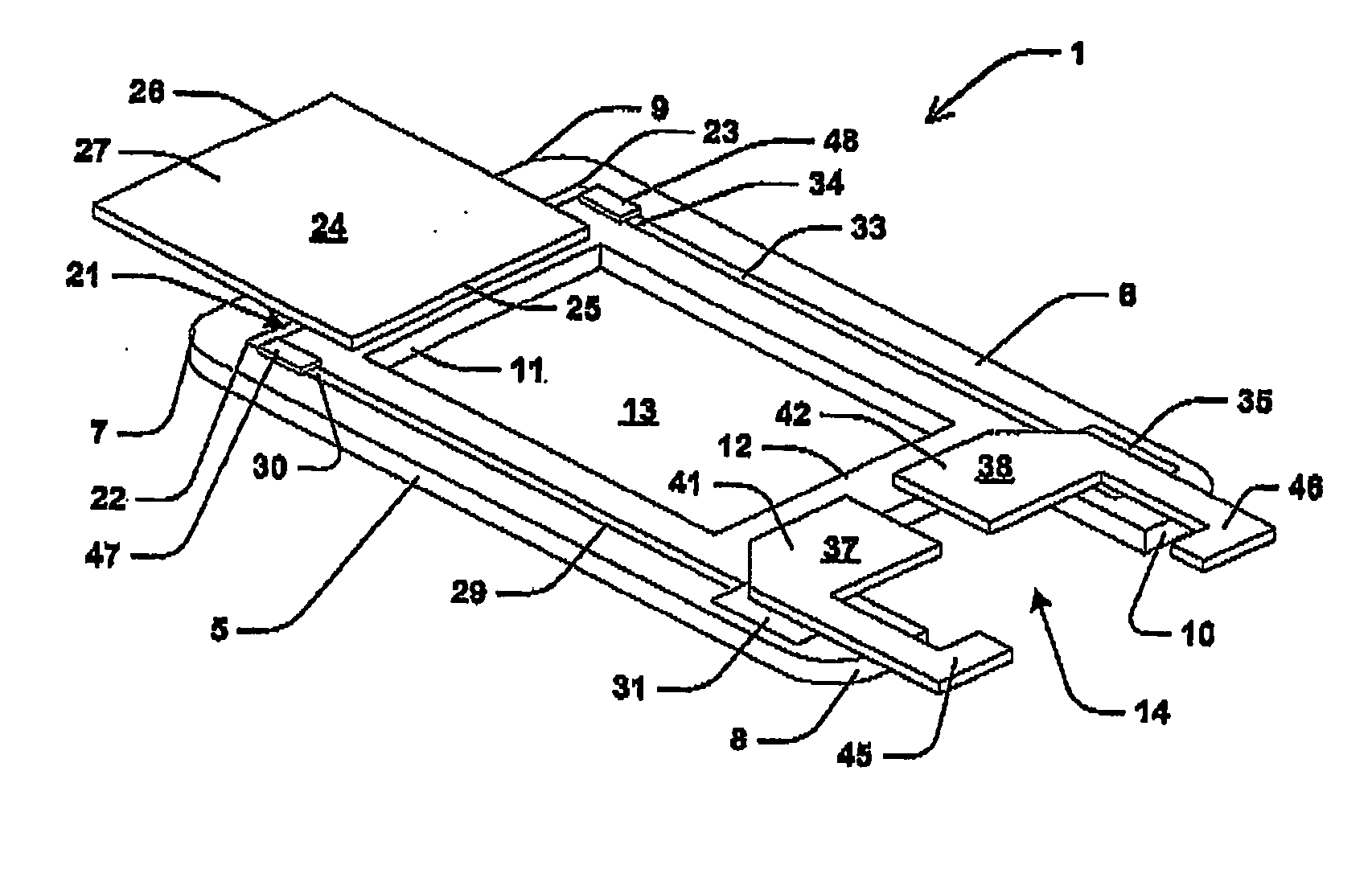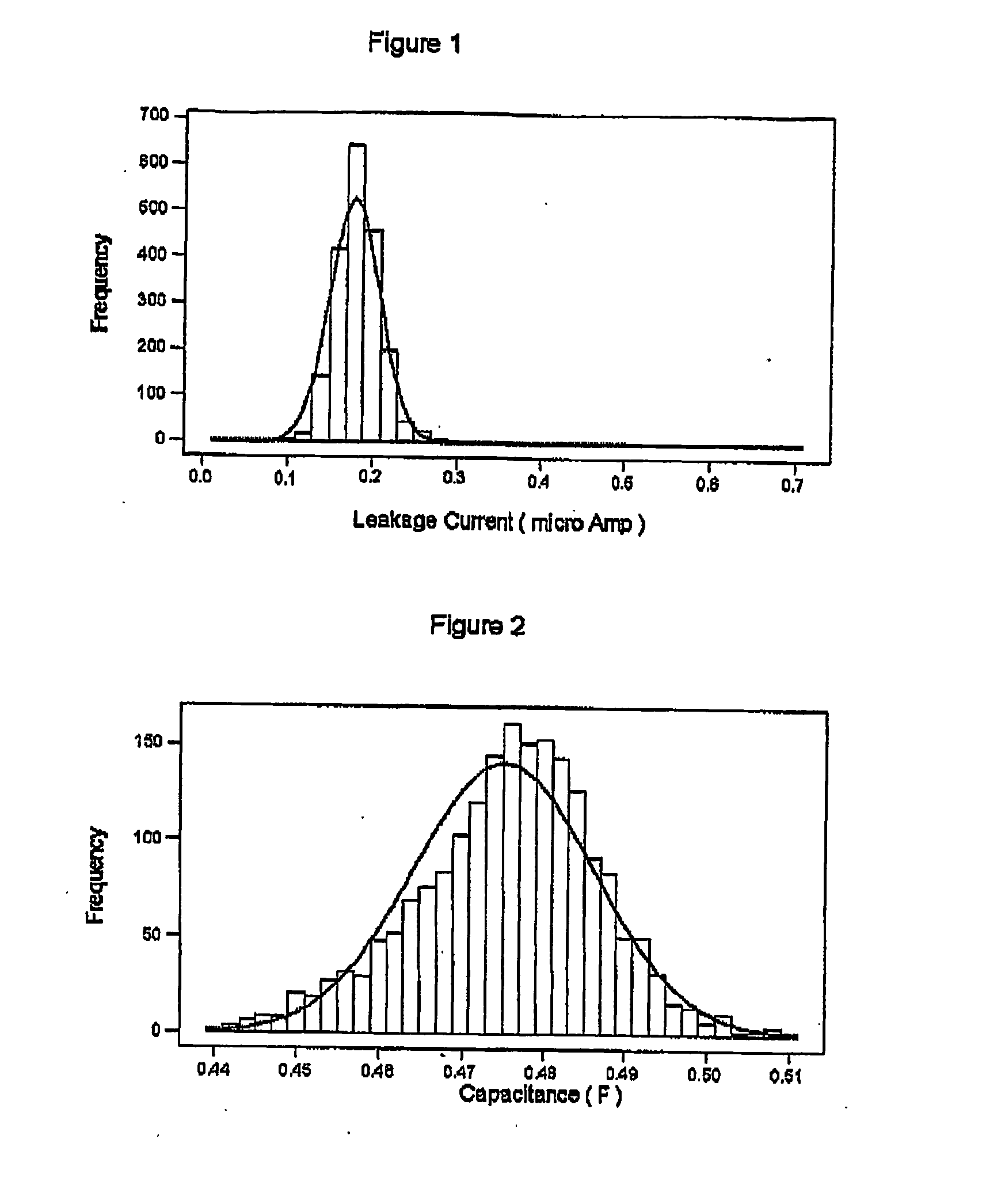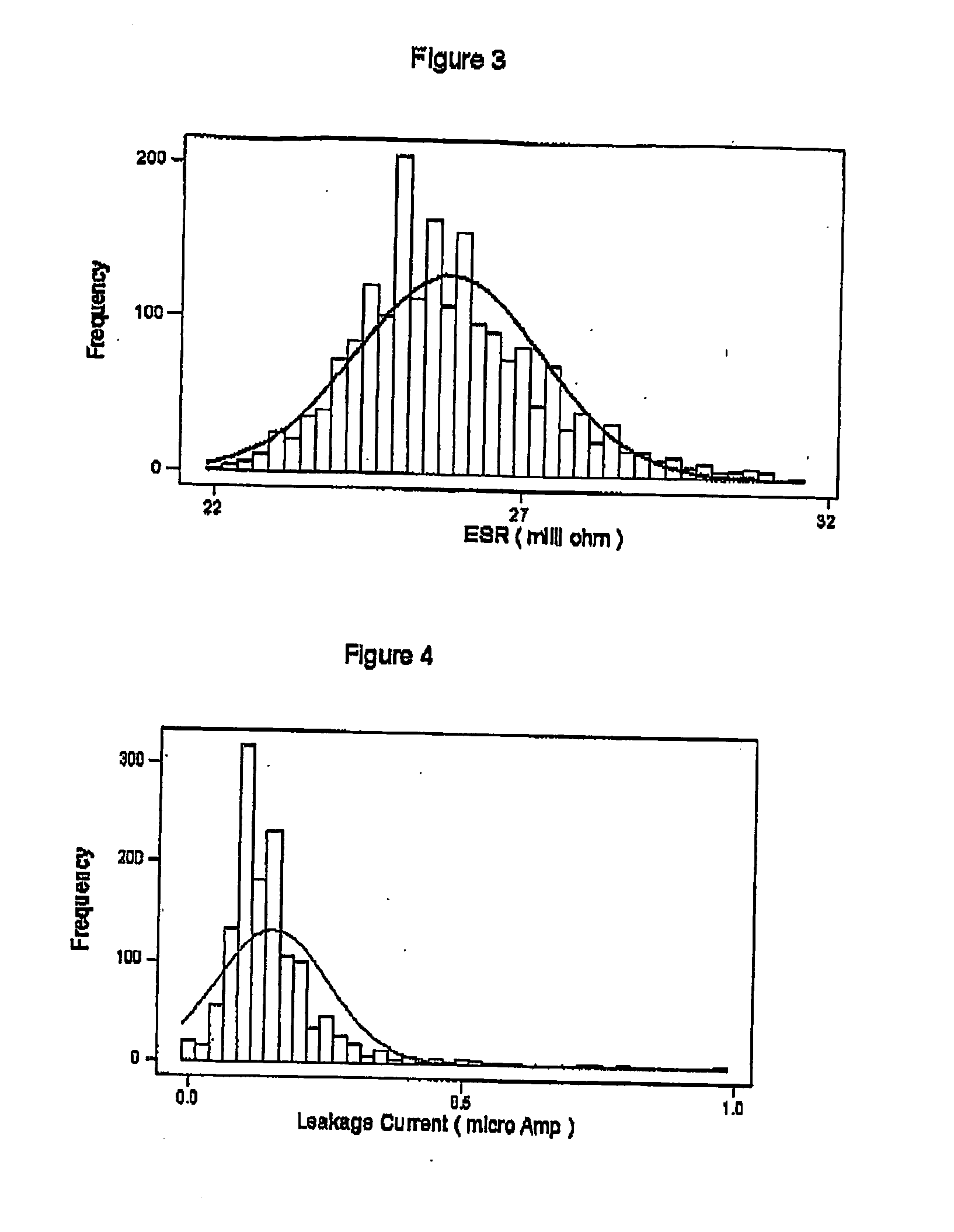Resistive balance for an energy storage device
a technology of resistive balance and energy storage device, which is applied in the direction of cell components, cell component details, electrochemical generators, etc., can solve the problems of shortening the likely operating life of the device, degrading the short-term performance characteristics of the cell, and limiting the operating voltag
- Summary
- Abstract
- Description
- Claims
- Application Information
AI Technical Summary
Benefits of technology
Problems solved by technology
Method used
Image
Examples
Embodiment Construction
[0283] Energy storage cells used in supercapacitors are, like other electronic components, typically manufactured in high volumes. All high volume manufacture involves some compromises and the acceptance of tolerances in key characteristics of the devices being manufactured. This is no different for supercapacitive cells.
[0284] Referring to FIGS. 1 to 6, there are provided respective histograms that illustrates the distribution of various parameters of batches of mass produced notionally like cells for use in supercapacitors. It will be appreciated that while the distributions shown in the figures are typical, variations will arise between batches depending upon a variety of factors, including manufacturing vagaries and sample sizes. There will be similar distributions for other performance parameters. While some of these parameters are more economical to control within tighter tolerances than others, exact correspondence is neither expected nor achievable.
[0285] When matching cal...
PUM
| Property | Measurement | Unit |
|---|---|---|
| thick | aaaaa | aaaaa |
| voltage | aaaaa | aaaaa |
| thickness | aaaaa | aaaaa |
Abstract
Description
Claims
Application Information
 Login to View More
Login to View More - R&D
- Intellectual Property
- Life Sciences
- Materials
- Tech Scout
- Unparalleled Data Quality
- Higher Quality Content
- 60% Fewer Hallucinations
Browse by: Latest US Patents, China's latest patents, Technical Efficacy Thesaurus, Application Domain, Technology Topic, Popular Technical Reports.
© 2025 PatSnap. All rights reserved.Legal|Privacy policy|Modern Slavery Act Transparency Statement|Sitemap|About US| Contact US: help@patsnap.com



